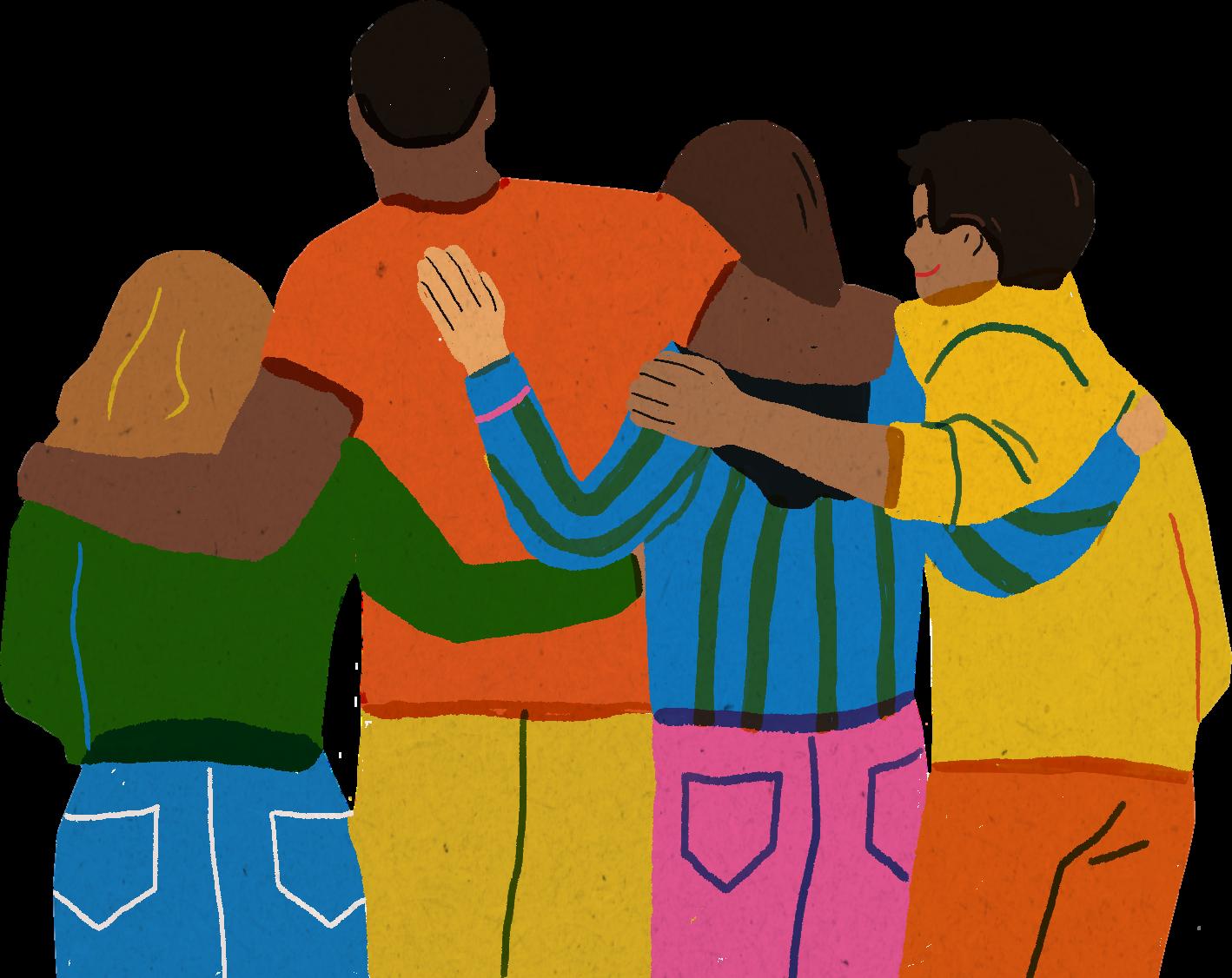Carmen Robles and Associates LLC NEWSLETTER









We are thrilled to share the outcomes of the second of three virtual town hall conversations on FENTANYL, NARCAN, and our CHILDREN'S HEALTH. The Suburban Ramsey Family Collaborative proudly hosted this event, bringing together more than 100 attendees from our diverse community. Recognizing the importance of inclusivity, we ensured that language would never be a barrier. Thanks to the support of our community, we provided professional interpreters for Spanish, Somali, Hmong, and Karen languages, making this town hall accessible to all.


SCAN this QR code or CLICK HERE

to answer a Follow- up Survey
YOUR OPINION MATTERS TO US!

Click here to SEE the video recording. This recording will be aired in SPNN.
Click here to OPEN Presenter Highlight Notes of the August 3rd Town Hall Conversation

ShirleyhasbeenaddressingthehealthcaredisparitiesofNativeAmericansherwholelife. Despitethesedisparaties,sheremainshopefulandseesthestrengthinunityamongthe11 tribesinMinnesota.Shebelievesinhealingthroughtraditionalpracticeslikebeadingclasses, sobrietypowwows,andspirituality,emphasizingtheimportanceoflove,support,and multiculturalcooperationamongthecommunity.Shirleyalsodiscussedthepressingissueof climatechangeanditsimpactonMotherEarth.


“Asacommunity,itmakesmyheartfeelgoodtoseeourculturesbeapartofthisconversation. Theprophecyisweallcometogetherwiththesamegoalandonemind.Wecanhelpourpeople healinagoodway;supporteachother;notfightingamongsteachotherandbeingjealous.It’s timewestopthat;we’reinthistogetherandwe’regoingtohealinahumbleandkindway.”
Over 100 community members attended this 2nd Town Hall Conversation. It was an honor to have our multicultural leaders take the stage and present a great variety of topics related to FENTANYL, NARCAN, and our CHILDREN'S HEALTH. Their expertise and passion ignited meaningful discussions and empowered our community to take proactive measures. Through interactive Q&A sessions, attendees actively engaged with our panelists, sharing their experiences, concerns, and perspectives. Together, we explored effective strategies to address this crisis, the life-saving potential of Narcan and how Social Media affects our children's mental health.

Jessie took the stage and delivered an enlightening talk about Fentanyl, delving into the various forms in which fentanyl can be found, highlighting the importance of being aware of its different presentations.
The presentation included an in-depth discussion on the use of fentanyl test strips as a harm reduction tool.
Our speaker emphasized the significance of Narcan as an emergency response to opioid overdoses, as a lifesaving medication.
find NARCAN? dangers.com

5 cedar street
o to Where to p? Page 8 For nformation

Click here (See page 11)

Another noteworthy topic covered was Xylazine, a veterinary sedative that has been found to be mixed with illicit drugs like fentanyl.
Click here to see more

 Karen Organization of Minnesota (KOM)
Karen Organization of Minnesota (KOM)
Lar shed light on various symptoms that might indicate drug use among adolescents. Some of the key symptoms to watch for include:

Dirty Fingernails: Pay attention to visible signs such as dirty or discolored fingernails, which might be a result of crushing drugs.
Frequent Bathroom Visits: Unexplained, frequent trips to the bathroom may indicate the individual is engaging in smoking or drug use.
Confusion and Sleep Issues: A sudden decline in cognitive function, confusion, or unusual sleep patterns could be potential red flags.
Dizziness and Nausea: Persistent feelings of dizziness and nausea might be linked to substance misuse.
Dilated Pupils and Sweating: Physical symptoms like dilated pupils and excessive sweating can be indicative of drug use.
Its important to observe changes in mannerisms and habits. Parents and caregivers should be alert if they notice their child locking doors, staying up all night, or isolating themselves from family and friends.
Withdrawal symptoms can be physically and emotionally challenging for individuals attempting to break free from drug dependence. It is a tough road to recovery that individuals face when they choose to stop using drugs. Pain, soreness, and itchiness, both internally and externally, are among the common physical discomforts experienced during withdrawal.

Slurred speech, difficult breathing, confusion, difficult walking, and purple skin are indicators that an individual may be experiencing an overdose. In such critical situations, it is crucial to act swiftly - administering NARCAN and immediately calling 911 can be lifesaving measures.
Four significant access points include:
Drug Dealers: Sadly, fentanyl is readily available through drug dealers, and its easy accessibility poses a severe threat to our youth.
Friends: Peer pressure and influence from friends can lead some youth down the path of fentanyl use, as they may be introduced to the drug by those whom they trust.
Family: In some cases, young individuals may inadvertently come into contact with fentanyl within their own homes, as it may be used by family members.
Gangs: In certain communities, fentanyl may be circulated through gang networks, further complicating the fight against substance misuse.

DNP, APRN, FNP-c



One of the key takeaways from Myriam's presentation was the significance of addressing the fentanyl crisis with our children. Engaging in open and honest conversations about its dangers and potential side effects helps equip kids with vital information to protect themselves and their peers.
Parents should encourage their children to share information about their friends, after-school activities, and daily experiences. By promoting transparency, parents can build stronger connections with their children.
Leading with a non-judgmental stance is paramount when discussing sensitive topics. Using statements like "I CARE," "I SEE," "I WANT," and "I WILL" helps children feel supported and heard, encouraging them to open up without fear of judgment.

Myriam shared an encouraging insight: Children genuinely want to open up. By providing a safe space for communication, parents can facilitate meaningful discussions about difficult topics like fentanyl.
Building strong connections with our children is vital. A combination of high expectations and high warmth fosters a nurturing environment where kids feel comfortable sharing their thoughts and feelings. It's key to understand who your child spends time with, knowing their friends (and their parents), and being familiar with their after-school group enhances parental awareness and helps detect potential risks.

In a digital landscape, there's a new drug dealer in town, and it's hiding in plain sight - our kids' cell phones. Social media platforms have become hubs for the exchange of information, including harmful content related to mental health and substance use.

Parents should be aware that certain emojis and keywords can trigger social media content related to depression, anxiety, and other mental health challenges. While social media platforms are equipped with algorithms that aim to filter harmful content, some messages may still slip through, potentially affecting vulnerable young minds.

Encouraging communication about their online experiences and being aware of their social media interactions helps parents identify potential red flags and offer support when needed. Additionally, parents should actively monitor their children's online activities, establish healthy boundaries, and maintain a safe digital environment for them.

Cyberbullying is another concern linked to social media use. The anonymity provided by digital platforms can embolden individuals to engage in hurtful behaviors, leading to emotional distress and negatively impacting mental health. Community awareness and collaboration are key to addressing the interplay between social media, mental health, and substance use.
As parents, caregivers, and community members, let's rise to the challenge of navigating the digital landscape alongside our children.

In2018,theMetroTransitHomelessActionTeam(HAT)(clickheretoseemoreaboutHAT)emergedasapowerful forceintheongoingbattleagainsthomelessnessanditsimpactonourtransitsystem.Armedwithcompassionand dedication,thisteamhasbeenmakingasignificantdifferenceinthelivesofthoseexperiencinghomelessnessin ourcommunity.
AboutHAT:
Has achieved remarkable success in providing housing for over 500 adults and children. The only police departmentintheareathatofferstheirownhousingvouchers. They are equipped with Narcan, a life-saving medication that counters opioid overdoses, they administer it promptlytothoseinneed.

Despite their significant achievements, the team faces a daunting challenge in the competing against the grip of fentanyl and drug addiction. The rise of fentanyl use has complicated efforts to keep individuals housed, as addiction and the allure of the streets can threaten their newfound stability.
To address these challenges, the HAT Team is proactively engaged in outreach efforts. They bring service providers directly to the community, meeting individuals where they are and offering essential support and resources. The team conducts outreach twice a week, reaching out to those in need and connecting them with crucial services.




Soft Opening Date: August 15th in Roseville
CMS is committed to offering quality healthcare services to every person, regardless of their background or legal status. Undocumented folks are welcomed and provided with the care and support they require. They serve individuals aged 18 and above.
A hallmark of CMS's approach is their commitment to providing opioid treatment on demand through walk-in services. This approach ensures that individuals can access treatment and support when they need it most, without the barriers of appointments or waitlists.
Harm reduction approach underpins every aspect of their services. Recognizing the complexities of addiction and the challenges faced by individuals on their recovery journey, CMS focuses on minimizing harm and maximizing support, respect, and dignity.
Click here to see more about CMS

Lar from KOM (Karen Organization of Minnesota) recognizes the urgency of this crisis and has joined forces with Humboldt High School via St. Paul Public Schools to combat this pervasive issue. He wishes they could have the funding to be in more schools throughout Ramsey County. The alarming reality is that 70% of the correction data reveals that individuals struggling with substance use issues have been exposed to drugs like Percocet, which are often laced with deadly fentanyl. To effectively combat this crisis, we need additional resources and more partners to join us in this fight.
Go to: https://mnkaren.org/

The Somali community faces unique challenges due to cultural differences between their homeland and the U.S. The younger generation struggles to fit into both cultures, while their parents hold firmly to traditional beliefs. This creates a communication barrier. Many are unfamiliar with NARCAN, a life-saving medication, which can lead to dangerous situations. Additionally, the community views alcohol and drug use as sins, making it hard to seek help. As a result, alcohol and drug support services are limited, requiring a culturally sensitive approach to education. Cultural and spiritual leaders are vital in ridging the gap between tradition and the need for support and education in the mmunity.

The Hmong community faces challenges similar to the Somali community. Y, who understands the struggle firsthand, knows that once you start using drugs and your family finds out, they may shun and push you away, seeing it as a disgrace to the family or clan. This rejection can lead to feelings of isolation, depression, and mental illness. Y, a Certified Recovery Specialist at MRC, emphasizes the critical importance of ongoing support after seeking help. MRC is there for anyone, with or without insurance, and they will stand by you throughout your journey. It's essential to find what works best for you and it's important to know that you don't have to face this alone.


Go to: https://minnesotarecovery.org/





Myriam emphasizes that cross-cultural collaboration is crucial, urging all of us to network and continue the conversation while utilizing each other's resources. In our African American communities, healthcare disparities are a significant concern, with prevalent issues related to maternal health, asthma, mental health, and diabetes affecting our wellbeing. It's essential to connect with the community and prioritize health literacy. Instead of reactive measures, efforts like focusing on primary treatment, doing outreach, and keeping our communities healthy are key. At Children's MN, we welcome everyone, providing care to all, and turning no one away when they need emergency services. To address these challenges, we must engage in town hall conversations like this and work together, take legislative action, and focus on prevention.
Go to: https://www.childrensmn.org/

Jessie shares that life can be tough when you've experienced encounters with the police. Even if you are a professional but wear grubby clothes, you can still get stopped. Building trust and having open conversations with the police remains a challenge, even for public health servants like Jessie. Jessie mentioned that sometimes people on the streets are given Narcan, a life-saving medication, but it's taken away just 20 minutes later. Despite the obstacles, it's crucial to keep working on building relationships and trust. Additionally, it's important to know that it's legal to carry syringes, which can be essential for harm reduction efforts. Go to: https://www.ramseycounty.us/content/public-health-center











Click here to see: How to use?
What are fentanyl test strips?


















